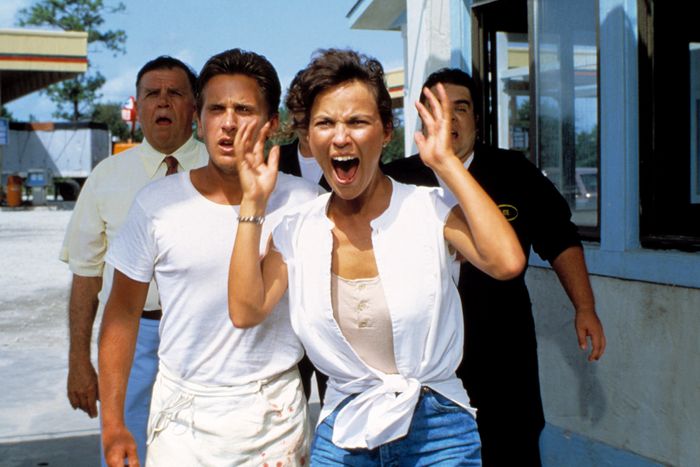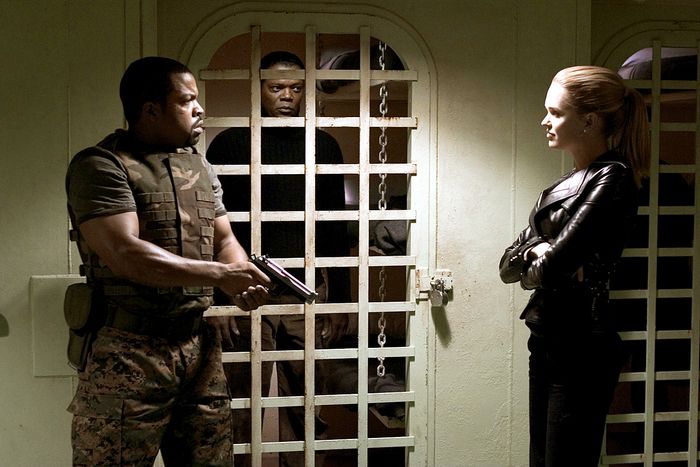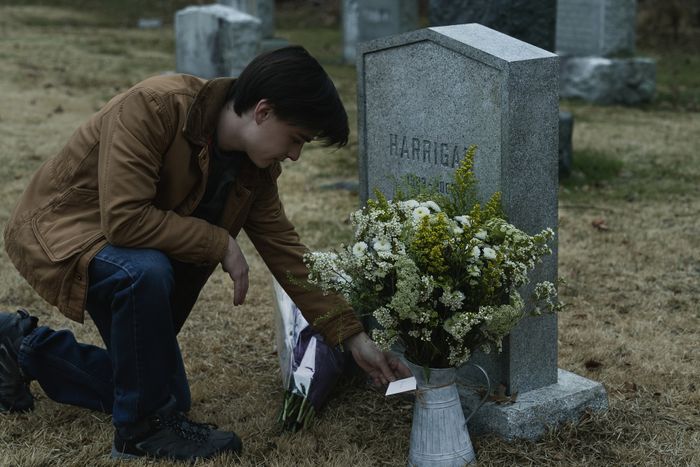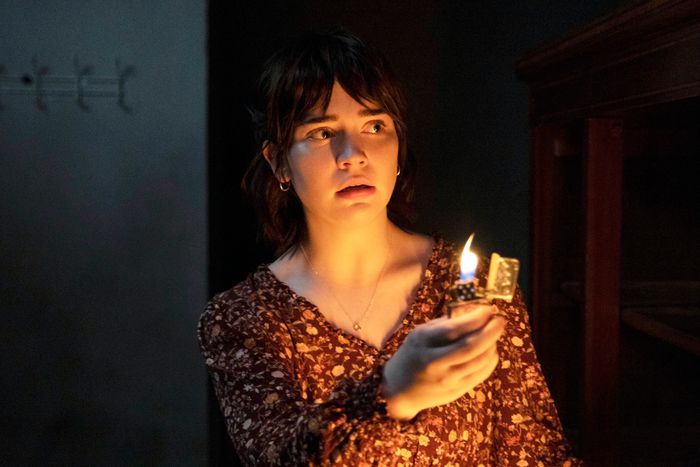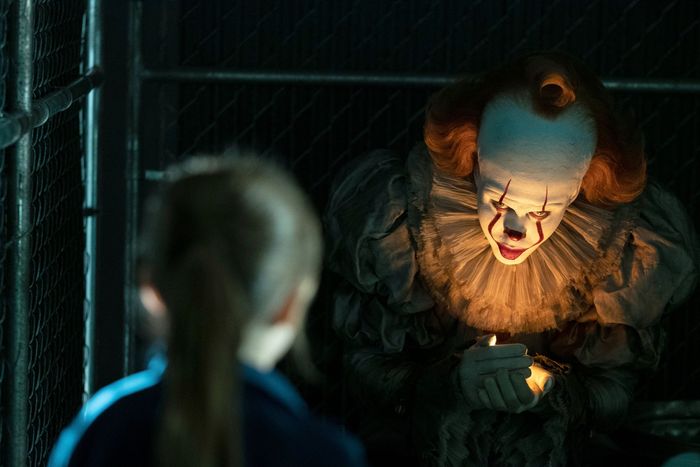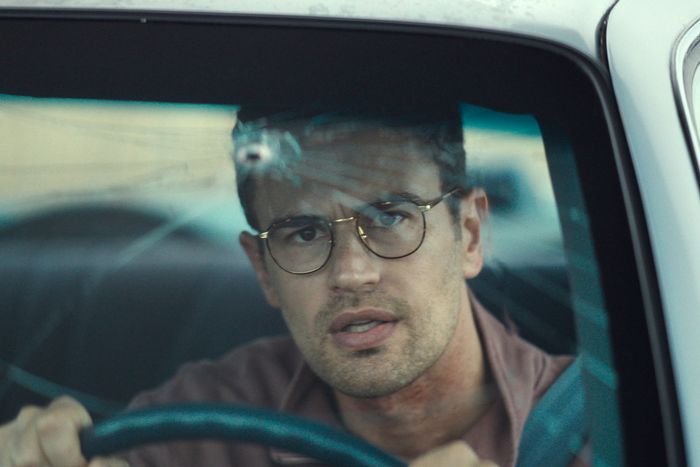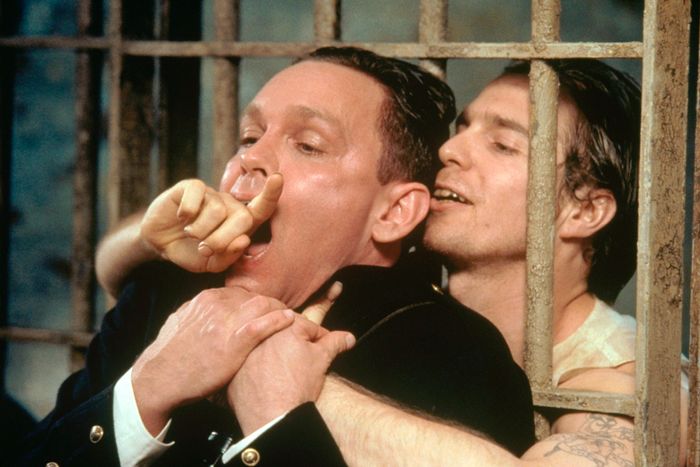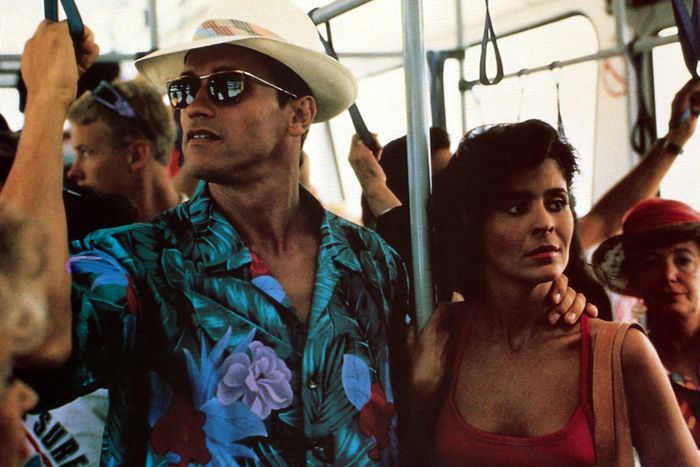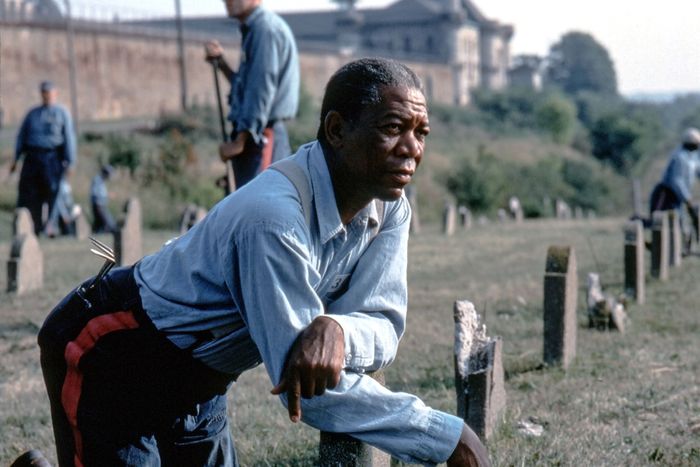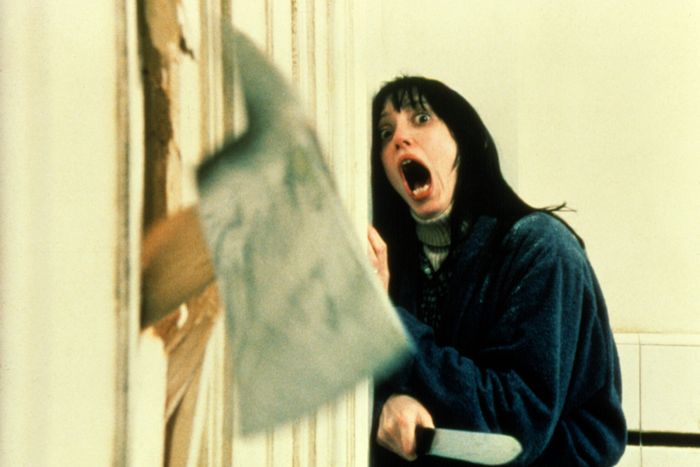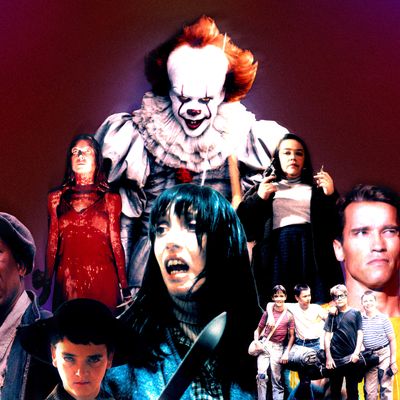
This story originally ran in 2017 and has been updated to reflect recent releases, including this week’s The Monkey.
Stephen King’s work has been adapted so many times — sometimes by King himself — that it’s impossible to find a single unifying thread in all of the film adaptations. Sure, a lot of them are horror (certainly a lot of the worst are horror), but that’s largely because the boom period for King movies was the 1980s, when he was known solely as a horror writer. As his canvas (and reputation) has expanded over the years, his work has been turned into dramas, comedies, musicals, and even a Bollywood movie.
Because of this dissonance, ranking King movies is particularly difficult: The Mangler and The Shawshank Redemption barely seem to exist on the same plane of dimensional existence, let alone on the same list of movies. Nonetheless, we gave it the old college try. (For the purposes of this list, we looked at theatrical releases only, which means the straight-to-streaming prequel Pet Sematary: Bloodlines doesn’t qualify. And, we excluded Lawnmower Man, an “adaptation” so vastly different from the original that King sued to get his name off it.) With few notable exceptions, you’ll find the adapted movies turned out much like King himself: They got more serious and substantial with age.
47.
Maximum Overdrive (1986)
The one movie King ever directed, and … well, you know, Stephen King is a wonderful writer who should probably stick with writing. The movie’s tone is set in the opening scene, in which a man (played by King) tries to take money out of an ATM, and the ATM calls him an asshole. Apparently, a comet has passed by Earth and given mechanical objects sentience, and once they attack humanity, Emilio Estevez helps lead a human resistance. The movie isn’t even absurd enough to have fun with this lunatic premise, and King has zero skills as a director — visually, narratively, or in any other sense. King has called it the worst adaptation of any of his works, and we are not about to disagree. Though, according to King: “I was coked out of my mind all through its production, and I really didn’t know what I was doing.”
46.
The Mangler (1995)
Of all the Stephen King adaptations, we must confess that this one has our favorite title. Boy, though, is this thing ridiculous. What, exactly, is “the Mangler,” you ask? Well, the Mangler is a demonically possessed … laundry press! This setup leads to hilarious scenes of an angry laundry press pressing up and down, like a hungry, hungry hippo. Eventually the Mangler develops legs and starts chasing people. It’s all terrible, but, you never know, it might be your thing. Maybe you’re into laundry-press cosplay. You do you.
45.
Graveyard Shift (1990)
Graveyard Shift is as schlocky as low-budget horror films get. Its premise: Overnight workers at an abandoned-then-reopened textile mill keep dying, and no one can figure out why. Wanna guess why? We don’t want to give it away. All right, they’re being killed by … a giant bat! Because bats hunt at night, you see. (In the short story, it’s a giant rat. Bats are much more cinematic.) This movie looks like it was made for about $35, but it does feature a truly insane closing credits song.
44.
Riding the Bullet (2004)
What was a thin, simple premise in King’s novella — widely considered the world’s first e-book, by the way, in 2000 — is extended to little effect in this drama about a man who tries to kill himself, then hitchhikes across the country to visit his dying mother. Director Mick Garris is an old King hired hand — he directed several of King’s straight-to-TV movies, including The Stand and the version of The Shining that had Steven Weber, of all people, in the Jack Nicholson role — and he tries to make this into something much more portentous and profound than it really is.
43.
Sleepwalkers (1992)
It’s Mick Garris again (this was actually his first collaboration with King), hacking away at another King movie, this time with an original script from King. What are “Sleepwalkers,” you ask? According to the Stephen King Wiki, they’re “an ancient and forgotten nomadic race of vampiric shape-shifting werecats.” In the movie, they’re an incestuous mother and son who need to feed on virgin blood, and … well, you can probably guess where it goes from there. Amusingly, the Sleepwalkers cannot survive contact with simple house cats, which leads to all sorts of ridiculous scenes of our bad guy screaming in horror at the sight of Garfield. This movie is probably most famous for being terrible, but secondarily for having all sorts of horror-movie cameos, from King himself to Tobe Hooper to John Landis to Ron Perlman to Mark Hamill to Clive Barker to Joe Dante.
42.
Silver Bullet (1985)
Considered faintly ridiculous when it came out, Silver Bullet looks even worse now; the special effects and creature makeup are bad even for a horror movie from 1985. Need proof? How’s this?
They really might have been better off just having a guy carry a mounted bear head around. You do have to admire a movie that casts Gary Busey as the doting, protective father … but only a little.
41.
Cell (2016)
The second teaming-up of John Cusack and Samuel L. Jackson in a King movie crashes and burns in a dumb cautionary tale about … well, about how cell phones are going to kill us all by sending a signal that turns us into murderous monsters. King wrote the book early enough (2006) in the age of portable technology that it seems helplessly dated by 2016. Our smartphones have come up with far more creative ways to kill us today.
40.
Dolan’s Cadillac (2009)
This is not a documentary about a fancy American car belonging to the Knicks owner, though you have to admit it wouldn’t be that surprising to see that show up at MSG some summer afternoon. Instead, this is a slight, limp crime thriller starring Christian Slater and Wes Bentley — years before each faded star would make a comeback — based off an old King short story that even he had probably forgotten. The movie tries to be a grindhouse schlockfest, but can barely work up the energy. This got a brief theatrical release before zipping straight to video, and has only ever been brought up again in lists like this.
39.
Firestarter (2022)
The original Firestarter — which is better than this, if only because of its insane cast — was supposed to be directed by John Carpenter. Carpenter does the music for this remake, and the music is without question the best part: Its synth-heavy creepiness promises an ‘80s horror vibe that, unfortunately, the movie never really delivers. Zac Efron plays the father of a little girl who can set things on fire with her mind, and the casting is more convincing as a career move than as the right choice for the movie: Efron is just too callow to be persuasive. The movie is mostly dull, and by the time it goes full burn-it-all-down at the ending, you’ll have lost track what this was supposed to be about anyway.
38.
Cat’s Eye (1985)
This was made back when horror anthologies were all the rage, and King was at the center of them. The gimmick here: There’s one cat that connects all three stories, two based off Night Shift stories and one written for the film by King. The biggest star at the time was Drew Barrymore, fresh off not just E.T. but Firestarter. But the best performance in the best vignette comes from James Woods, as a man who is so desperate to quit smoking he will try anything. The movie feels pretty dashed off, and it’s more reminiscent of The Twilight Zone’s whimsy than it is scary. But there is a cat.
37.
Needful Things (1993)
You wouldn’t think a moral fable about a possibly demonic shop owner (played by Max von Sydow!) wreaking havoc on a sleepy small town, pursued by heroic sheriff Ed Harris, could possibly be bad — but, alas, it is. With a better director than Fraser Clarke “Son of Charlton” Heston, Von Sydow’s whimsical evil would have had menace and wit, but this plodding film has neither. How do you make Harris and Amanda Plummer boring? It’s really hard! Needful Things somehow finds a way.
36.
Creepshow 2 (1987)
The sequel doesn’t feature George Romero behind the camera (though he did write the screenplay), but it’s still based on King stories — albeit lesser-known, less-fun ones than the original. None of these are as scary or as inventive as in the first film, though “The Raft” — in which horny teenagers get devoured by a creature from the deep lake in which they’re swimming — makes us squeamish still today. This one did poorly enough that it would be 20 years until they made another one, and neither Romero nor King were involved.
35.
Mr. Harrigan’s Phone (2022)
A classic high-concept King premise: A teenager named Craig (Jaeden Martell, a little older and a little less interesting than he was in the It movies) develops a friendship with an elderly man (Donald Sutherland, forever casually menacing) and, when the man dies, places a phone he’d bought for him in the man’s casket. Because he misses talking to the man, he calls the phone when he has problems with a local bully, and, wouldn’t you know it … the bully is found dead the next day. Then the phone starts texting Craig back. What could have been a true old-school King creeper ends up a bit of a soggy coming-of-age story: The movie never really recovers when Sutherland leaves. Also: Don’t give old people social media; their lives have been hard enough.
34.
The Night Flier (1997)
One thing King hasn’t written a lot about is journalism and media (at least, not until Twitter and the Donald Trump administration). He does try his hand at it with this adaptation of a short story about a schlock TV journalist (the late Miguel Ferrer) trying to track down a vampire. Ferrer’s actually pretty great in this — he’s a perfect seedy journalist — but the movie isn’t smart or sharp enough to do much with him. King has said that Ferrer’s character is the same “Richard Dees” who pops up as a shady journalist in The Dead Zone, for what that’s worth.
33.
Firestarter (1984)
Drew Barrymore had her first post-E.T. starring role as a little girl who can set things on fire with her mind. Barrymore is able to make a mean-little-girl face with the best of them, even if the movie’s a little too dark and scary for an 8-year-old (much like Barrymore’s life at the time, actually). It’s not great; King himself said it was one of the worst movies based on one of his books. Fun trivia: Firestarter was originally supposed to be directed by John Carpenter, but the studio rejected him because The Thing had flopped. This movie would have been a lot better if it had been directed by John Carpenter. By the way: This was the only time George C. Scott, Art Carney, Martin Sheen, and Heather Locklear would share a screen together.
32.
Dreamcatcher (2003)
Otherwise known as “the movie where Lawrence Kasdan went off the rails,” Dreamcatcher had everything going for it, from Kasdan to a William Goldman/Kasdan script to Morgan Freeman and Thomas Jane and Timothy Olyphant. But the film is a total mess, start to finish: a mishmash of It and some military-thriller, monster-movie clichés culminating in a junky special-effects ending that barely makes sense. It is bizarre that people this smart and this talented made such a misfire. For what it’s worth, after this movie, there weren’t any big-budget studio King adaptations until The Dark Tower.
31.
The Dark Tower (2017)
After years of false starts and, more recently, months of bad buzz, the long-anticipated adaptation of King’s beloved Dark Tower series proves to be kinda dull, in the most inoffensive way imaginable. Actually, that’s what’s most disappointing about the finished film: At least if it had been outright terrible, it might have been more memorable. We have no complaint with Idris Elba as the badass, square-jawed Gunslinger, who takes awkward teen Jake Chambers (Tom Taylor) under his wing, quickly realizing he has the power to destroy the Dark Tower and, consequently, the universe. But we have plenty of complaints with Matthew McConaughey, who plays the Man in Black as if he’s still doing his goddamn suave-mumbling-mystic routine from his terrible Lincoln ads. The Dark Tower has gotten the stamp of approval from King, and the movie has cheeky blink-and-you’ll-miss-‘em references to other King works like The Shining, 1408, and The Shawshank Redemption. But the film never really gets out of the blocks — it comes across as merely the vague notion of what an epic spectacle should look like, but without the audacity, vision, or soul of one.
30.
Pet Sematary (1989)
Considered by some to be King’s scariest book, Pet Sematary becomes less of a queasy moral fable and more of a traditional horror, jump-scare picture in the hands of director Mary Lambert. King has never had much of an issue about putting kids in peril in his books — It is basically entirely about that — but it’s still a bit much to see a toddler being hit by a truck turn into such a pivotal plot point. Interestingly: This is, as far as we can tell, the only movie on this entire list to be directed by a woman, other than the remake of Carrie. (Coincidentally, Lambert was friends with the Ramones and got them to write the titular song for the closing credits.)
29.
The Dark Half (1993)
Directed by George Romero during that brief period in the ‘80s when he wasn’t making zombie movies, this is one of King’s “nothing in the world is scarier than life as a writer” movies. (King came up with it after he stopped writing books as “Richard Bachman.”) Here, a writer (Timothy Hutton) uses a pen name to author a series of best-selling novels, but after he retires the name and “buries” the fake author, the name comes to life and tries to kill him. It’s a ridiculous premise that’s played weirdly straight, but it does feature a loopy, fun performance from Hutton, against type. Overall, it plays out as the thin idea it was on the page.
28.
Thinner (1996)
This Bachman book always had a fun premise: Rich, overweight, asshole lawyer runs over a gypsy woman, whose father then curses him to lose weight until he disappears. But the movie isn’t interested in any sort of moral tale, or in any sort of satire of capitalism — it just goes for the gross-out stuff. Imagine what David Cronenberg might have done with this.
27.
The Boogeyman (2023)
Very loosely based on one of the short stories from King’s terrific collection Night Shift — but really only one scene is adapted from the story before the movie goes its own way — The Boogeyman starts out with a legitimately creepy vibe, thanks largely to a minimalist score and ominous darkness throughout. This turns out to be a bit of a feint though. Despite a strong turn from a reliably excellent Chris Messina, the movie ends up settling into yet another “elevated” horror film about overcoming trauma. The subtext becomes text, and the film isn’t quite scary enough to make up for its mostly leaden message. It’s a nice idea, but, all told, this one barely feels like a King adaptation at all.
26.
A Good Marriage (2014)
Based off a 2010 short story King wrote that was inspired by Dennis Rader, the BTK killer, A Good Marriage stars Joan Allen as a wife who discovers, after 25 years of marriage, that her husband (Anthony LaPaglia) is a serial killer. Allen’s a tremendous, vastly underappreciated actress, and this movie gives her countless opportunities to showcase why. It’s still oddly muted, neither pulpy nor psychologically twisted enough to rise to a level much higher than a TV movie. Rader’s daughter, by the way, blasted King for exploiting her father’s victims by using their story as the basis for his story, and ultimately for this film. It was her first interview since Rader was arrested, and she noted that Rader was, in fact, a big fan of King’s writing.
25.
No Smoking (2007)
Remember that segment in Cat’s Eye we were talking about earlier — the one in which James Woods plays a guy who goes to extreme lengths to quit smoking? Well, Indian filmmaker Anurag Kashyap made a whole Hindi movie about that concept. The movie does not directly credit King onscreen — though Kashyap has said King’s 1978 story “Quitters, Inc.” was the inspiration — and it ends in nearly the exact same fashion as the Woods story. The movie is hard to follow if you don’t already know the story and is considered one of the biggest disasters in Indian cinematic history. But it’s not that bad, really, and it’s ambitious in a way that the Indian film industry really wasn’t at the time, which might be why it received such a poor reception upon release.
24.
Cujo (1983)
You have to admire the power that King had in the ‘80s: He could make a movie in which the happy ending is somebody shooting a dog. This is just your basic canine nightmare: Cute Saint Bernard gets bit by a rabid bat, goes insane, starts attacking and killing people. The movie isn’t any more complicated than that — though it does have “Who’s the Boss?” rug rat Danny Pintauro as the cute kid. Plus, there’s a scene in which Cujo is trying to knock over a car that is as viscerally frightening as it is utterly ridiculous. Imagine a nightmare Old Yeller. You could do worse.
23.
Hearts in Atlantis (2001)
Okay, stick with us here: Hearts in Atlantis is a “loose” adaptation of a Dark Tower tie-in short story called “Low Men in Yellow Coats,” part of a larger collection about the baby-boomer generation titled Hearts in Atlantis, which has a short story in it called “Hearts in Atlantis,” which has nothing to do with this movie adaptation. It’s very confusing. Anyway, Anthony Hopkins plays an old man with a mysterious power bonding with a preteen boy, played warmly by the late Anton Yelchin. It’s nice seeing Hopkins playing a relatively normal person, but the movie is too tame and respectful to explore some of its darker themes.
22.
Carrie (2013)
Theoretically, a modern-day, female-guided Carrie could have worked: Kimberly Peirce hadn’t made a bad movie yet, and she seemed to have the exact right perspective for what’s ultimately a horrific coming-of-age story. Alas, it doesn’t quite come to life, despite a solid performance by Chloë Grace Moretz in the lead role. (King wanted Lindsay Lohan!) The movie never quite places itself in its time and place; it feels like a remake of a ‘70s movie rather than its own thing. If anything, the film is a little too tasteful; it’s so afraid to be pulpy, it ends up not being much at all.
21.
It Chapter Two (2019)
The primal, childhood terrors of the first film are replaced by much more pedestrian scares this time around, and a pumped-up cast — the presence of Jessica Chastain, James McAvoy, and Bill Hader is a sign that the first film made a ton of money — can’t save this long-winded (it’s nearly three hours!), bloated sequel. The horror sequences are much more perfunctory and familiar than they were in Chapter One, and it really is a lot less fun watching adults be scared than it is kids. The movie may just have too much reverence for King canon to truly let itself run free. Fittingly, King remains a huge fan, and he even has a (sort of funny!) cameo in this one. But the highlight of the first film was Bill Skarsgård’s Pennywise, who gets the short straw in this one, paying sixth fiddle to his much duller adult co-stars. More kid terror, less adult angst, please.
20.
Doctor Sleep (2019)
King wrote this sequel to The Shining in part as a way to take back control of the story after Stanley Kubrick’s movie (which King famously disliked, insanely), and it serves the fundamental purpose: It gets rid of all the parts that Kubrick made interesting and replaces them with more rote, straightforward traditional horror stuff. The film still isn’t that bad, and it features solid performances from Ewan McGregor and Rebecca Ferguson. But it can’t escape Kubrick’s masterpiece, and eventually it stops trying, leading to an appearance from … well, not Jack Nicholson, but essentially Jack Nicholson.
19.
Secret Window (2004)
Made in one of those last moments before Johnny Depp turned entirely into a cartoon, Secret Window is yet another King story about writer’s block, and it has more than a passing similarity to The Dark Half. This one has a darker ending than the book, in a way that has a nice Hitchcockian twist. But even in 2004, Depp was a little too twitchy an actor to play the Regular Writer Guy this movie needs him to be.
18.
The Monkey (2025)
Osgood Perkins’s Longlegs was a surprisingly massive hit that clicked in large part because it really did feel otherworldly, as if Osgood (and his collaborators, including of course Nicolas Cage) were somehow channeling real, legitimate evil — the film was unsettling in ways you sense even the film didn’t entirely understand. It’s a surprise, then, to see Perkins, in this adaptation of a King short story about a toy monkey that causes death wherever it ends up, go the opposite direction.” This is ostensibly a horror movie in that there is a lot of blood in it, but what it really is is a snarky, cheeky, downright sniggering splatter comedy: Perkins isn’t just winking at the audience, he’s spraying it with fake blood and demanding you have as much fun as he seems to be. The movie has its moments — and it finds a modicum of heart in Tatiana Maslany’s performance as the doomed mother of doomed twins — but the seriousness of purpose in Longlegs is nowhere to be found here. Perkins is just goofing around in a way that King, even when on one of his larks, never entirely is; you get a sense that Perkins isn’t invested in any of this other than to just make you see how clever he is. King, at his best, can mix horror and comedy splendidly. That might not be Perkins’s forte.
17.
Pet Sematary (2019)
Maybe everything that dies someday comes back. Taking liberties with the source material, directors Kevin Kölsch and Dennis Widmyer have crafted a superior Pet Sematary to the 1989 version, for several reasons. The first is that this remake manages to be more consistently unnerving and mournful, really sinking its teeth into a dark fundamental truth: Even the most levelheaded of people simply cannot let go of the past or the loved ones they lose along the way. In addition, this Pet Sematary has a much better cast, led by Jason Clarke as a rock-steady patriarch who doesn’t believe in an afterlife until he discovers that his backyard is home to a cemetery that can resurrect the dead — sort of. And finally, it’s those twists on King’s book, which we won’t reveal, that allow the film to find its own creepy, despairing tone. Like too much modern horror, the remake indulges in lame jump scares and questionable plotting. But Kölsch and Widmyer weave some mighty fine mood, which means this good-enough adaptation is still miles better than most films devoted to King’s work.
16.
Children of the Corn (1984)
It doesn’t hold up quite as well as you might remember it, but that’s probably for the best; for a certain generation of kids, “Malachai” was just about the scariest word in the English language. The movie’s a little more hackneyed and obvious now, but its central idea is still an undeniably creepy one: possessed children with pitchforks. This was based on a short story initially published in Penthouse (before Penthouse was the literary juggernaut it is now).
15.
Christine (1983)
In case you forgot King was a baby boomer, here’s a whole movie about a boy who loves his 1958 Plymouth Fury so much that he doesn’t notice it has become sentient and is trying to kill him and everyone he loves — until it’s too late. The movie doesn’t quite realize it’s as silly as it is (John Carpenter directed, with a little bit less of a wink than usual), but that’s okay: You’ll be fully aware of it and probably have a dopey blast in spite of yourself. This seems destined for a remake with a self-driving Uber, doesn’t it?
14.
The Green Mile (1999)
If part of the secret to The Shawshank Redemption’s success was that it told an epic story with a scarcity of bombast, Frank Darabont’s follow-up film is where he starts to get a little too big for his britches. The Green Mile, with its three-hours-plus run time, might as well be exhibit A for Hollywood’s myriad overlong, self-important Oscar-bait dramas. And yet, if you can get past all that, this adaptation is surprisingly emotional and sensitively acted. Tom Hanks plays Paul, a death-row prison guard who treats his job with near-religious solemnity, and Oscar-nominee Michael Clarke Duncan is John Coffey, his newest inmate, who just so happens to have magical powers. To be sure, there is too much stuffed into The Green Mile — woozy ideas about redemption, an affected sense of awe — and as touching as Duncan’s portrayal of Coffey is, Darabont treats the character like a simplistic, irritatingly naïve beacon of goodness. (He’s in prison for murder, but don’t worry: He totally didn’t do it, removing any possibility of moral nuance.) Ultimately, what saves the movie is the cast and crew’s expert devotion to its polished, well-meaning hokum.
13.
Apt Pupil (1998)
Probably the worst thing that could have happened to Apt Pupil was Bryan Singer choosing it as his follow-up to the massively successful The Usual Suspects. It set the film up to be something bigger than it was ever meant to be. What probably could have worked as a small chamber piece about a former Nazi war criminal (Ian McKellen) and the teenager (Brad Renfro) who discovers him is blown up a little larger than required. It was Singer’s passion project, and after it struggled at the box office, he made X-Men, the first of what would turn out to be six comic-book-superhero films. An argument could be made that he hasn’t challenged himself as much since.
12.
The Mist (2007)
Frank Darabont ended his trilogy of King adaptations with this story of regular people trapped in a supermarket, fighting mysterious monsters from an enveloping mist. It’s much less sentimental and more horror-oriented than Darabont’s other films, but that works in its favor: It’s a lot less moony and self-important than those films, even if it’s not as good as either. There are some legitimate scares, and it has a terrific cast, including Thomas Jane, Marcia Gay Harden, Frances Sternhagen, and Andre Braugher. Other than Sausage Party, it’s the best film set almost entirely in a supermarket.
11.
Dolores Claiborne (1995)
Kathy Bates says this, and not her crazed captor in Misery, is her greatest performance, and she’s pretty fantastic in this creepy, sad story of a family torn apart by a murder and the tumult behind it. There’s nothing supernatural in this story — just decades of pain and repressed memories bubbling up, with Bates as the title character and Jennifer Jason Leigh as her tortured, tormented daughter. The courtroom-thriller aspect of the film doesn’t work, but just about everything else does. It’s a better movie than you remember.
10.
It (2017)
The 1990 mini-series had the space to encompass both halves of King’s epic tale of a group of friends in Derry, Maine, who do battle with the menacing Pennywise. But the Warner Bros. film sticks to the characters as outcast teens, whereas the planned sequel will flash-forward to when they’re adults once again confronting this spooky specter. Remarkably, though, director Andy Muschietti’s thriller doesn’t feel incomplete without the second segment, more than capably delivering enough scares and emotional resonance — not to mention an ending that leaves the door open for the next installment but closes this chapter with real power. Jaeden Lieberher (so good in Midnight Special, and so much better than The Book of Henry deserved) is superb as Bill, who falls for the tomboy Beverly (a believably troubled Sophia Lillis), right as their small town starts being plagued by strange disappearances. Tim Curry’s portrayal of Pennywise was so iconic it was always going to be hard to top, but Bill Skarsgård’s performance is perhaps even more inhuman — and, therefore, even creepier. As an exploration and deft manipulation of the fears that adolescents face from a frightening, uncaring world, It has a fantastic psychological undercurrent to its horror scenes. (In this movie, your darkest anxieties are coming to kill you.) And anyone still on the fence about how goddamn unsettling clowns are will finally understand why the rest of us get the willies around them.
9.
The Running Man (1987)
Adapted from one of King’s Richard Bachman books — save for Thinner, the only one of the official Bachman Books canon to be made into a movie — The Running Man has almost no similarity to the novel at all. And thank goodness for that! Arnold Schwarzenegger is in full on ‘80s mode, to glorious effect, happily merging the silly and the grotesque — and it’s a blast. The movie has some real-life reality-show resonance today, but even if you ignore that, it’s just so much over-the-top fun that you won’t care either way. The real thrill comes from Richard Dawson, playing a nightmarish version of himself. It’s one of the greatest over-the-top villain performances of the ‘80s. Who loves you, and who do you love?
8.
1408 (2007)
The plot of 1408 is the simplest thing: John Cusack is a writer who specializes in the paranormal and insists on staying in a hotel room that has driven everyone who has ever stayed in it suicidally insane. And that’s all the movie is: Cusack sitting in that room, as reality slowly dissolves around him, going nuts in a way that only Cusack can. This makes for a genuinely unsettling thriller, directed with inventive weirdness by Swedish filmmaker Mikael Håfström. The movie has four different endings, but none of them are that satisfying; it’s the journey into madness that sells this one.
7.
Stand by Me (1986)
The first non-horror King adaptation is one of the quintessential 1980s hangout movies about guys being guys, working through their male bonding rituals. It’s the only one with a dead body. Director Rob Reiner took his first step away from comedy to more dramatic fare with Stand by Me, and got remarkably lucky by casting young actors Wil Wheaton, River Phoenix, Corey Feldman, and Jerry O’Connell as best buds who go in search of a corpse in the woods during the summer of 1959. Terror doesn’t await them — unless you count universal anxieties, such as puberty — and while the film is undeniably nostalgic for the unhurried drift of youth, it’s pretty smart about how seemingly minor adventures become, in hindsight, defining moments in a life. For all its modest pleasures, Stand by Me justifies its inclusion of the classic Ben E. King title song: They’re both comforting declarations about the warm, unbreakable bonds of friendship. And, for what it’s worth, it’s the adaptation that Stephen King likes the most.
6.
Creepshow (1982).
George Romero and King joined forces on the original horror anthology, a genuinely creepy, pulpy, and occasionally hilarious ode to old horror comics such as Tales From the Crypt and House of Mystery. One of these is dopey (“Father’s Day”); one of these is terrible but features an incredibly strange and oddly entertaining performance from King himself (“The Lonesome Death of Jordy Verrill”); one is good old monster-movie scary (“The Crate”); one is a true ‘80s relic (“Something to Tide You Over,” which features the amazing spectacle of Leslie Nielsen trying to kill Ted Danson); and one is still fantastic and skin-crawling today (“They’re Creeping Up on You,” with E. G. Marshall as a rich germaphobe who will remind you quite a bit of our current president). It’s inconsistent, but still a load of fun.
5.
Misery (1990)
Nearly 30 years after Kathy Bates won the Oscar for her performance in Misery, it remains as surprising an occurrence as it did when the respected stage actress took to the podium to accept her prize, declaring, “I’d like to thank the Academy — I’ve been waiting a long time to say that.” That’s no knock on her remarkable portrayal — a perfect blend of menace and dark humor — but rather an acknowledgment that this isn’t the kind of role that usually gets accolades. Misery, a horror movie with a satiric streak, launched Bates’s film stardom. She’s fantastic as Annie Wilkes, the obsessive fan of Paul Sheldon (James Caan), a popular romance author who she holds prisoner in her home until he agrees to abandon his new manuscript — which she hates — and write something more to her liking. Annie could have been an easy, misogynistic monster, but in Bates’s hands, the character is turned into a complicated portrait of obsession, revealing the dangers of losing oneself in the work of others. Bates is frightening in her stillness, which makes Annie’s sudden bursts of violence all the more horrifying. But sneaky dark humor comes from the actress’s malicious glee at landing such a rich role. Annie may be a lunatic, but she’s Paul’s comeuppance — a clever reminder that vain artists can be held captive by their need for stardom, sometimes literally.
4.
The Shawshank Redemption (1994)
King has such a low opinion of so many of the bad movies made from his work, one assumes he’d be fond of Frank Darabont’s Best Picture–nominated version of the early-1980s novella Rita Hayworth and Shawshank Redemption. But King had his concerns about Darabont’s screenplay: “Oh, man, no chance they’re going to make a movie out of this puppy,” the author told the Huffington Post he remembered thinking. “It’s too talky. It’s great, but it’s too much talking.” King wasn’t wrong: The film is too talky. But guided by its deeply likable leads, The Shawshank Redemption warmly and (relatively) understatedly walks us through its Big Themes: friendship, empathy, and that moment when a man decides whether to get busy living or get busy dying. Darabont’s thoughtful character study sees incarceration as a metaphorical purgatory in which people find their true selves — a notion that has helped make The Shawshank Redemption a now-permanent fixture at the top of IMDb’s user-voted best films of all time. Not surprisingly, the movie’s rhapsodic online devotion has provoked an equally passionate backlash. Neither reaction does justice to this modest tearjerker, which, ironically, works best when it’s muted and contemplative. Hardly a masterpiece and certainly not a sappy, populist embarrassment, The Shawshank Redemption is simply a solid, good movie — an assessment that will probably annoy people in both camps.
3.
The Dead Zone (1983)
Perhaps the most underrated Stephen King movie and the most underrated David Cronenberg movie, this haunted thriller is basically the “would you go back in time to kill Hitler if you could?” premise, put on film. Christopher Walken is the doomed Johnny Smith, a schoolteacher who gains the ability to touch someone and see their future after a car-accident-induced coma. This uncanny ability leads him to a senatorial candidate (Martin Sheen — inspired casting), who Johnny learns will someday become president and blow up the world. Cronenberg gives the whole movie a funereal pall: a sense that sad things are going to happen to good people, but there’ll be a sad honor to it all. Real-world parallels between Sheen’s Greg Stillson (who hires goons and thugs to push an authoritarian regime) and current presidents aside, the movie holds up splendidly today, not least of all thanks to Walken, who is as likable and leading-man-handsome as he would ever be. It’s one of his best performances. Seek it out — it’s still great.
2.
Carrie (1976)
King’s breakthrough as an author famously almost didn’t happen. While working on Carrie, the struggling writer tossed his initial few pages into the trash, ready to abandon the idea of a telekinetic teen, until his wife pulled them out of the garbage and insisted he keep going. Director Brian De Palma turned that book into one of the singular teen dramas — which just so happens to be one of the great horror films. Sissy Spacek is superb as Carrie, a small-town gal as terrified about her budding womanhood as she is of her shaming, religious-zealot mother (Piper Laurie, practically demonic). People think of Carrie as being frightening but, until its murderous finale at the high-school dance, the movie’s dread has little to do with gore or body count. Rather, De Palma puts us into the paranoid mind of a young person, showing how her daily life is a waking nightmare that a lot of high-schoolers can recognize as their own: the pain of first love, the awkwardness of feeling like a weirdo, the strange changes in your body, the anxiety of figuring out popularity. Above all, Carrie is a beautifully calibrated, slowly escalating symphony of tension. By the time prom comes and Carrie sets her classmates aflame, it’s both a relief and a shock. In the wake of Columbine, films such as Elephant and We Need to Talk About Kevin wrestled with the reasons why kids take up arms to express their misery. But Carrie remains the most disturbing and sympathetic film about the hell inside so many teens.
1.
The Shining (1980)
Perversely, one of the reasons that The Shining is such a beloved horror film is that Stephen King hates it so. “I don’t get it,” he said in 2014 about the movie’s passionate fans. “But there are a lot of things that I don’t get. But obviously people absolutely love it, and they don’t understand why I don’t. The book is hot, and the movie is cold; the book ends in fire, and the movie in ice.” This is a large chunk of the movie’s appeal: Director Stanley Kubrick took the basic idea of King’s acclaimed novel and distorted it. Instead of a tragedy about a decent, flawed man who goes insane, we get Jack Nicholson’s pathetic Jack Torrance, a grandiose, pompous ass who dreams of literary glory, dragging his unhappy family to a remote ski lodge, resulting in bloodshed and agony. Kubrick’s film is a hell of a black comedy that satirizes the mediocrity of middle-class life: In the director’s world, fathers are pitiful providers, mothers are blandly cheerful (while quietly suffering enormously), and the kids see far more than their parents do. But by stripping the story down to its core elements — supernatural powers, madness, claustrophobia — Kubrick opened viewers’ minds to a treasure trove of possible interpretations, many of which were compiled in the wonderfully labyrinthine documentary Room 237. (Not surprisingly, King hates that movie, too.) But if Kubrick’s Shining is so cold, why, then, do we keep revisiting it and devouring its details, enraptured over and over again by its meticulous construction and elegant horror? Is it, just maybe, that it’s the only King adaptation that actually improves on the source material — giving us not just one way to look at the author’s masterful work, but two?
Grierson & Leitch write regularly about the movies and host a podcast on film. Follow them on Twitter or visit their site.


